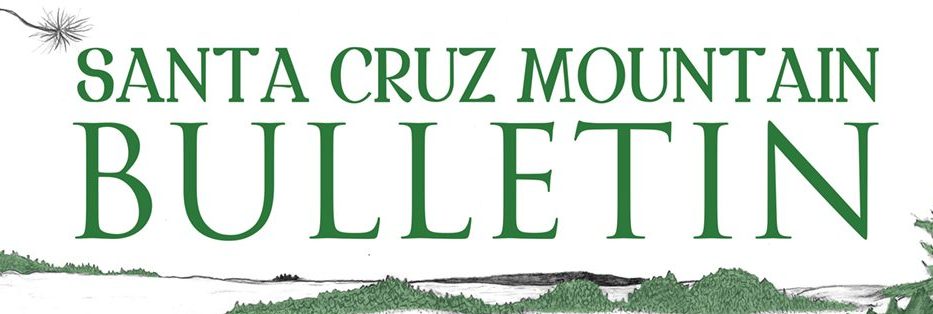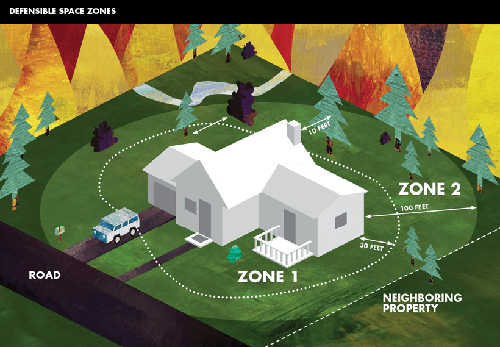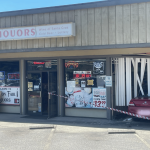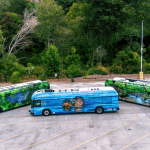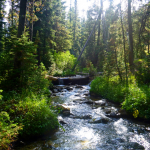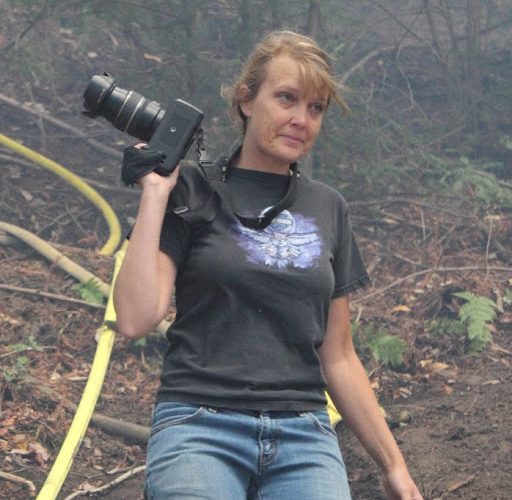 By Kevin Foster
By Kevin Foster
With fire season upon us, it’s a good time to walk your properties and look at them through a firefighter’s eyes.
Step one is to make sure your address is clearly marked in large numbers somewhere that’s easily seen by first responders. Since we don’t have sidewalks and gutters like in the city, where it’s painted on the curb in front of every house, we sometimes have to be creative about where to put numbers so first responders can easily identify see addresses in the Santa Cruz mountains. But be sure to check that it’s easy to see your address from the street.
Second is defensible space. Is dry vegetation cleared from around your structure? A good practice is to landscape around your home with non-flammable groundcover and vegetation. With smaller properties, keep it cleared and well landscaped within 30 feet as you’ll see in zone one in the link I posted below for defensible space. In defensible-space preparation, you also want to keep fire personnel safe. We’ve all seen how fire can quickly spread from one thing to another. So look to see if there’s a chain of dry vegetation or shrubs that could ignite and lead to your home. Is there forest debris outside your property line that could ignite shrubs, grass that is close enough to ignite a tree that’s next your home? Keep trees cut back and maintained so that they are not touching your house, and check for other vegetation that could burn up to that tree. Keep roofs and gutters cleared of forest debris. See valuable links below with fantastic detailed information on defensible space
Finally, know your evacuation routes and have an emergency to-go bag. It’s very good practice to have an evacuation plan and an emergency to-go bag packed with essentials in case you’re not allowed back home for a while, or if you have to evacuate in a matter of moments. Clothing, medications, pet and infant supplies, and all important documents on a password-protected flash drive are good to include. Copies of important documents including insurance company phone numbers are good to put on the flash drive too. It’s not a bad idea to store a little cash at a relative’s house. Another good practice is to make sure you have a pet carrier in an easily accessible location, and always keep your pets’ microchip updated, or their collar tags with current information and phone numbers. Discuss and practice emergency evacuation plans with your family, decide whether you’ll have an out-of-area phone number for everyone to check in to. Set a meeting place in case the family is not at home during an evacuation. Introduce yourself to your immediate neighbors and explore ways to help one another in the event of a mandatory evacuation if you’re not home or they’re not home and pets or kids need to be evacuated. Make plans to help one another. And remember: If you fail to plan you plan to fail.
Evacuation routes are available at: https://bcfd.com/community-evacuation-zones/
To learn more about defensible space on your property, go to: https://www.readyforwildfire.org/prepare-for-wildfire/get-ready/defensible-space/
